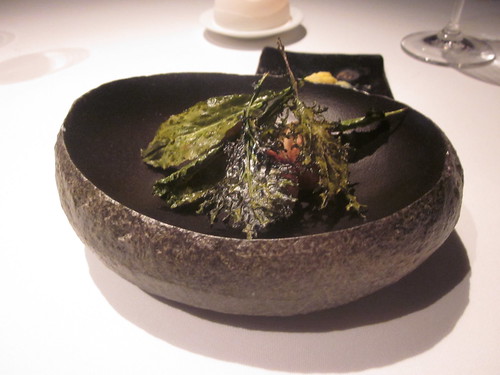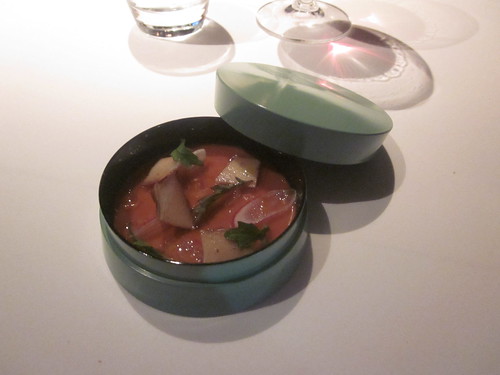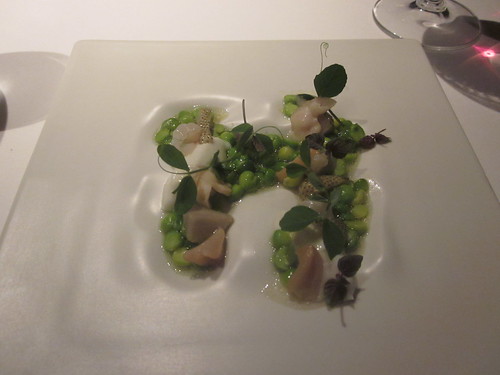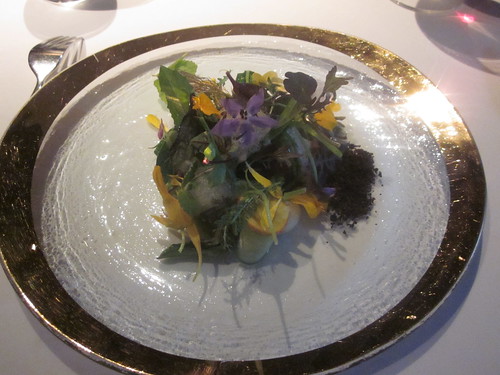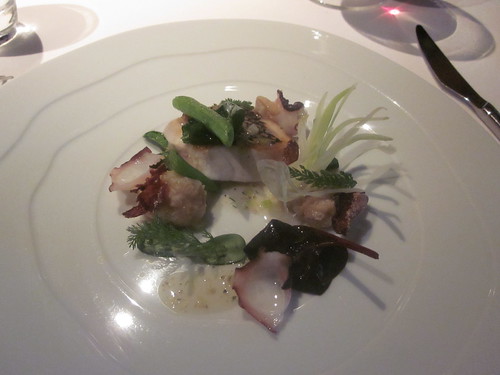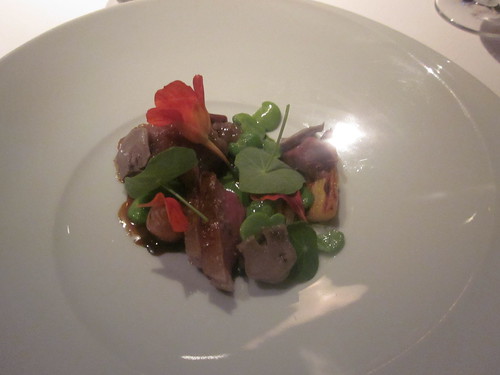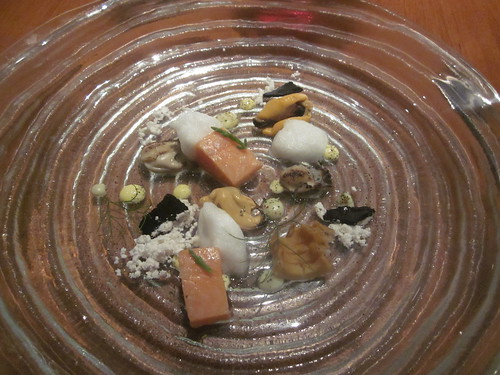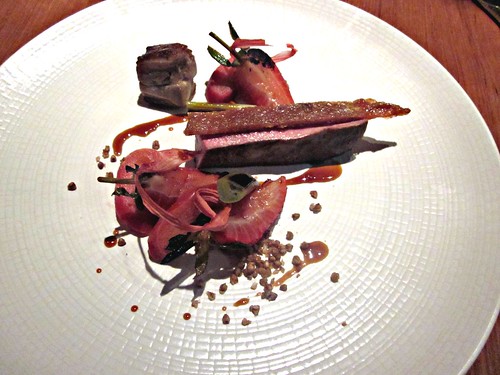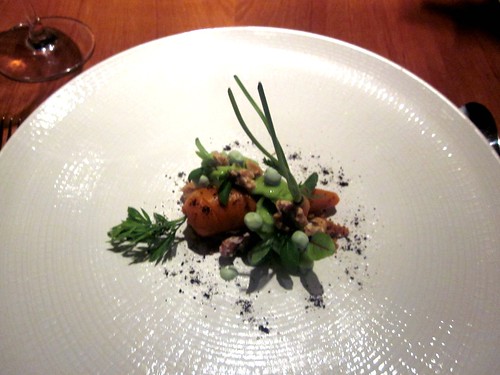The Challenge – Restaurant at Meadowood – St. Helena, CA
The most memorable mignardise that I shall ever taste was served on June 15, 2011 by Chef Christopher Kostow, the inspired and mischievous chef of the Michelin Three Star restaurant at the ultra-luxe Meadowood resort in St. Helena, California. One does not image that a chef cooking at a resort that might easily get away with a Cal-Ital version of Surf’n’Turf would serve a “sweet” that might as easily been a poke in the eye with a sharp stick. This tiny bite was a slight Oreo-like cookie (so slight that I didn’t even think to take a photo) with a mint filling. But what a mint-filling! In most instances a mint filling is little more than a sugar delivery system. But suppose one excised all sugar. The innocent, dream cookie was a mouthful of Scope. Pure, unabridged mintiness.
I have often wondered, even speculated in print, whether dishes, like sculptures, need to be welcoming to be artistic. Today I realize that even at the highest of the high-end resorts, at least one chef will utter uh-uh. Admittedly of the fourteen dishes served only two (an amuse and a mignardise) were challenging. But still the gesture reflected the subtle rebalancing of the relationship between chef and diner. And I was proud to have been a victim.
Both the décor – a high-ceiling, open space – and the service – very cheery, slightly nervy - was as one expected at a top Left Coast restaurant. Everything polished, wooden, white and light.
The first amuse was as precious as could be: a small crackly pillow filled with liquid goat cheese, garnished with a tiny flower from the restaurant’s garden. This latter was to be a theme of the evening; we almost ate a bouquet. The bite was luxuriant, because of its jewel-like quality, and it was surely a mouth opener.
Amuse followed amuse. The second dish, equally memorable, contained a few micro-carrots and radishes hidden in a snow drift of fromage blanc ice. I have never seen a dish to compare, and had the vegetables been any smaller they would have had to been served with a magnifying glass. The dish, only a few bites, was quite ingenious. It was a creation unlike any other.
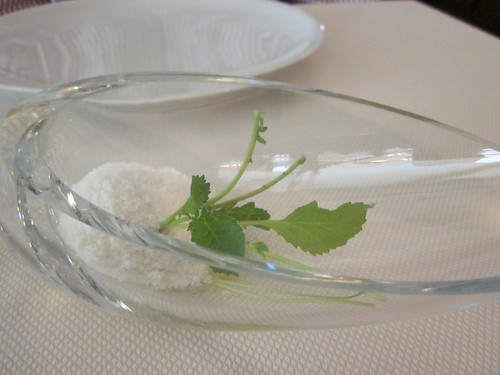
Geoduck clams in beer batter, wrapped in lettuce with lemon zest and served on bread crumbs, was Amuse 3.0. Less showy than the ice, it was simple and delicious.
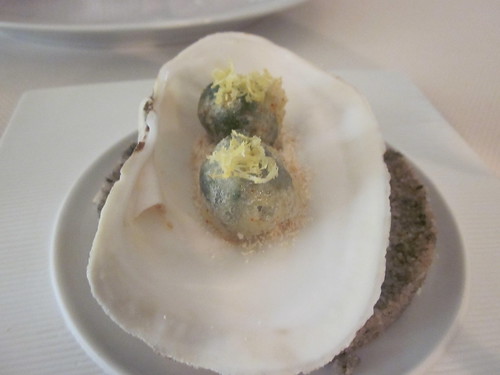
The final amuse was another poke in the eye: Goat yogurt custard with salty pickled plum (Japanese umeboshi) with nut rocks and shiso. When I tasted it I was convinced that some poor ill-starred stage on her final day in the industry had dropped a shaker of salt in the mix. The dish was on the edge of inedibility, and for several hours I felt great compassion for Chef Kostow. He was the star chef at a RESORT for chrissake! The plating was so perfect that it was a crime that the dish tasted so. Finally after several delightful dishes I inquired about the misbegotten plums, only to be assured – and assured several times! – that the taste was quite intentional. It was, our server asserted, designed to awaken our tongue. No salt had been added, it was all the salted plum. But for me, as with the later mint cookie, it raised the issue of whether food needed to be delicious to be worth serving. Richard Serra’s sculptures on the plate. The umeboshi certainly made me sit up, take notice, and beg for relief. It revealed that Kostow is nothing if not brave, but I’m grateful that it was only in the freebies – the amuse and the mignardises - that he tested us.
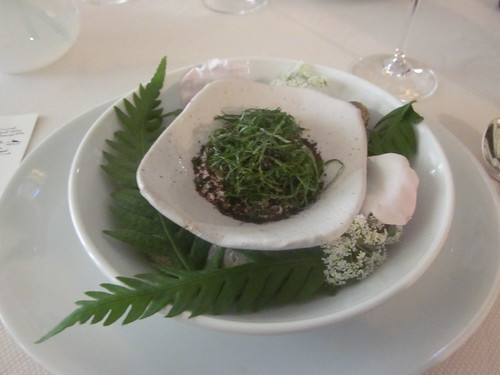
The first dish of the nine-course tasting menu was an artistically displayed Geoduck Clam Grilled over Grape Wood with Avocado, Osetra Caviar, and Shaved Almond. Served on a slab of wood taken from a wine carton, it was a smooth and elegant presentation. While the dish had the modernist foible of lacking a true center, the components were beautifully prepared, especially the geoduck reprise.

The second offering was the flavorful star of the night: Foie Gras Enrobed in Licorice with Wild Fennel, Glazed Pickled Cherries and Black Walnuts. I have lost some enthusiasm for foie gras, often used to demonstrate that the meal was worth its price, but thanks to the licorice this was a superb use of the duck’s liver, reminiscent of a salmon and licorice dish once served at the Fat Duck. The slightly bitter licorice cut through the unctuousness of the foie gras. It was a truly distinguished dish.
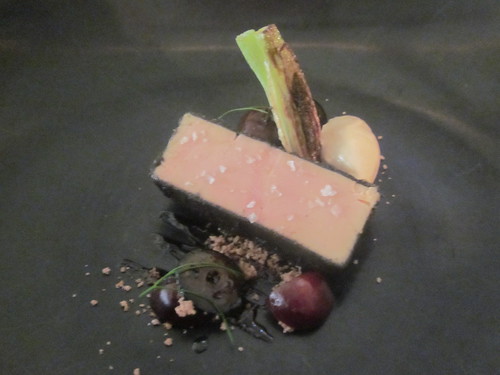
The third plate was a composition of Cucumbers of Sea and Land with Borage, Sorrels, and Frozen Herbs. Given the dangers of cooking with sea cucumbers, the texture was spot on, and, as I prepare to leave California, it reminds me of how much I will miss the bounty of Bay Area farms.
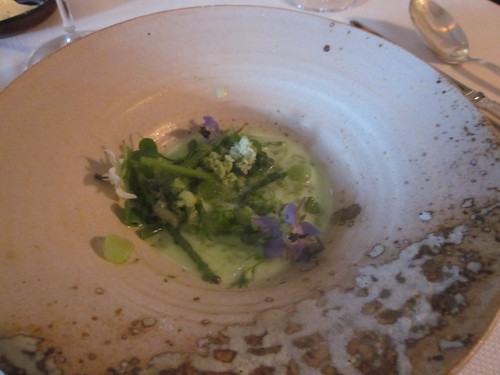
Live Scallop Roasted in its Shell with Caraway, Seaweed, and Cauliflower was brought to table covered by the top shell, removed with a dramatic flourish. The scallop and accompaniments were matched to excellent effect. Kostow has a gift for understanding which flavors, colors, and shapes match. The caraway was a wry addition.
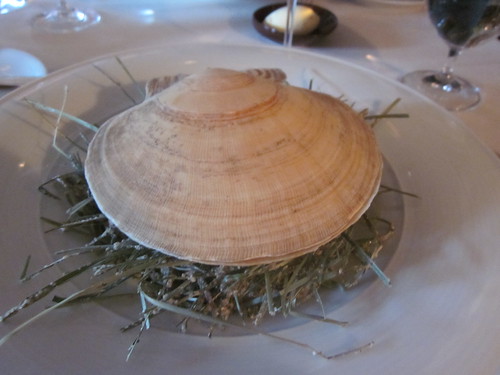
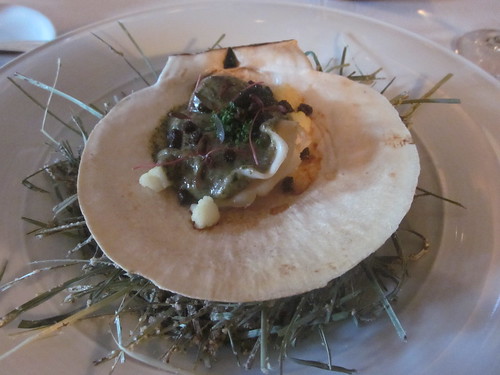
I have recently noticed that California chefs often select duck for their big protein. It is not that they have used the liver and do not wish the rest of the bird to go to waste. But duck has a gaminess that chicken lacks and a lightness of being that one doesn’t find in cow. Chef Kostow served his duck (breast and confit) rubbed with Chermoula spices (a North African spice marinate, often including lemon, pepper, cumin, and garlic) with Raw Rhubarb, Mustard Seeds, and Celery Leaf. The dish was beautifully presented and tasty, although I felt that it was less distinctive than some of his other creations.
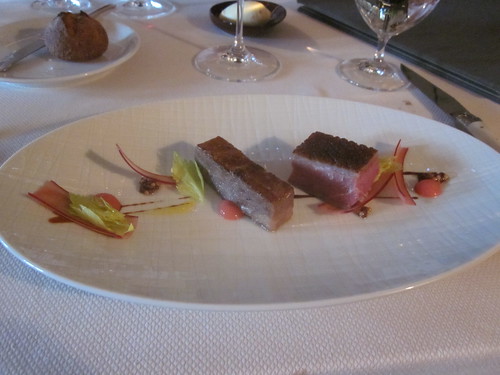
Tête de Porc was quite a surprise, given that it was served on a tasting menu at a prime resort. Chef Kostow should be grateful that he has all of those Michelin stars to protect him. Not many chefs are willing to serve pig’s ear, head cheese, brined tongue, and pork cheek to well-heeled diners (along with peas, smoked potato and horseradish). Still fewer would get away with it. But it truly was a brilliant modernist dish with each component adding the proper texture. What was chewy was never too chewy. The display, reminiscent of the geoduck clams – a horizontal culinary poem – was a display of robust genius.

Our cheese course (Le Jeune Austise, a Verbena ash cheese from the Loire) was served with textures of Apricot and dashes of Sassafras Honey. As a break, it was very pleasurable.
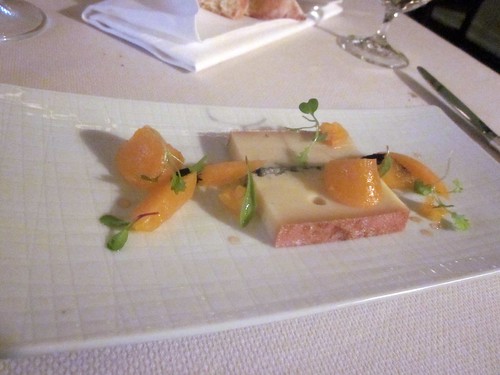
As a palate cleanser we were served Rose Sorbet with fresh botanicals and an elderflower veil. The mixture of rose and elderflower was inspired, and again it was beautifully composed.

With some brio (and Chef Kostow is filled with brio), dessert was named “To Quicken the Heart”: flavors of umami, red cedar, and butter popcorn, and brown butter dacquoise. While the cedar might have been more pronounced, it was an impressive sweet that edged toward a very high-end modernist pudding.
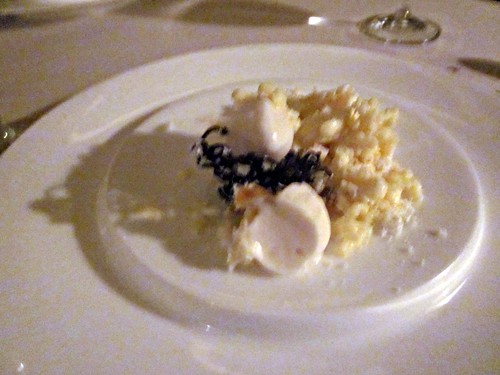
And then among the mignardises was the mint cookie.
Meadowood is one of the most illustrious American restaurants. Of the Bay Area restaurants it holds it own with French Laundry, Coi, and Manresa: each a renowned culinary treasure. To think that I almost missed Meadowood, imagining that it might be resort dining at its best, but Chef Kostow is up to something else: creating a distinctively Californian, distinctively modern, and distinctively challenging cuisine. It is a triumph.
The Restaurant at Meadowood
900 Meadowood Lane
St. Helena, CA 94574
800-458-8080
http://www.meadowood.com/wine-and-cuisine/the-restaurant/
